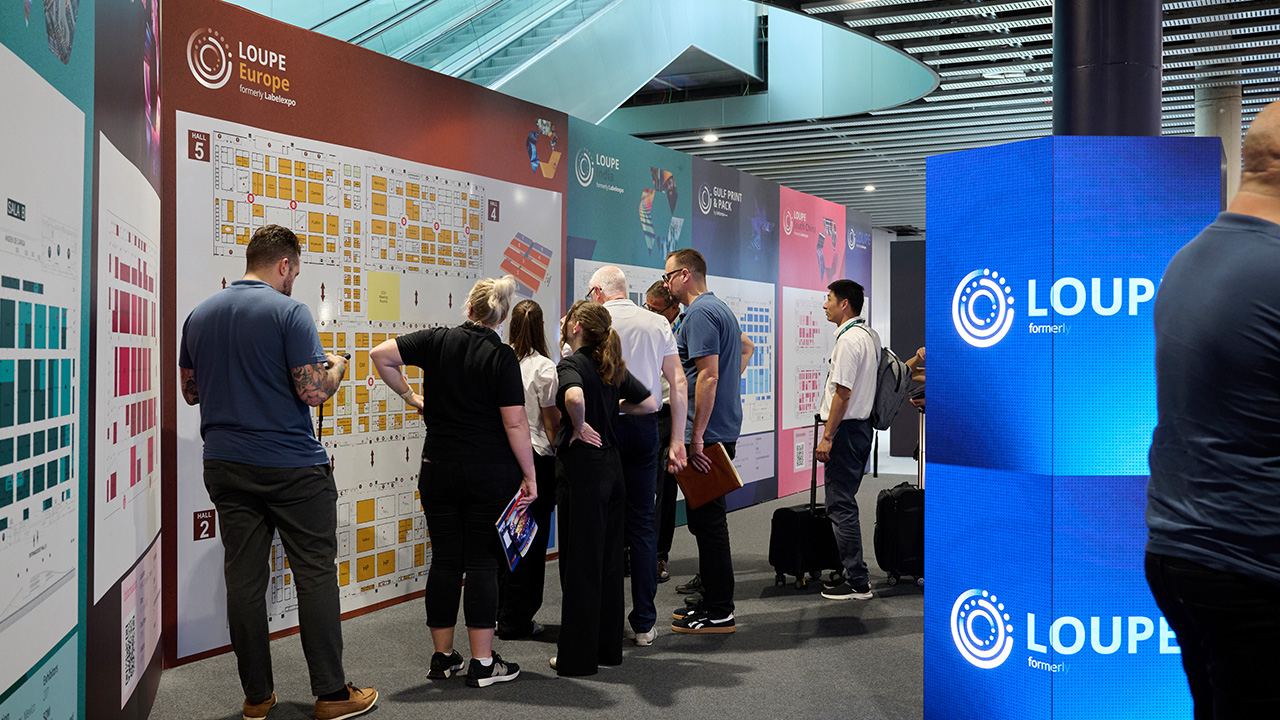Scoot over, digital. Physical is making a comeback
As brands look for ways to create deeper connections with customers and more authentic real-life experiences, physical and tactile touchpoints are witnessing a resurgence.

When it comes to digital and physical brand experiences, it’s not either-or. As I’ve written about many times, a brand’s best approach is an integrated, multi-platform, multi-sensory strategy. That said, we are absolutely seeing a resurgence of physical, tactile touchpoints, particularly in packaging.
Now, those of us in the industry know that packaging has never actually gone away. After all, you can’t sell a product without packaging. But resources for print and packaging ebb and flow, and right now, marketers are going with the flow. The packaging industry is increasing at a compound annual growth rate of 3.89 percent, and its worth is predicted to reach 1.43 trillion USD by 2030 (up from 1.18 trillion USD in 2025), according to Modor Intelligence. Brands are rediscovering the power of touch, tactile engagement, premium packaging and haptic finishes to create deeper connections with customers and more authentic real-life experiences. While the blending of online and offline channels will continue to evolve and vie for our attention, here are a few of the top reasons that I believe physical is making a comeback.
1. Engaging physical senses creates a strong emotional connection.
The physicality of paper, packaging and print media offers a distinct advantage: It can be touched, felt, shared and experienced in real life, forming strong connections that digital interactions often lack. Moreover, the sense of touch is fundamental to human experience and emotion. For years, studies have shown the impact of sensory engagement on increasing the emotional component of consumers’ buying decisions. When you think about it, packaging is often the first physical touchpoint a consumer has with a brand, whether seeing its product on the shelf or receiving the delivery of an online order. Tactile finishes on packaging, such as foil stamping, embossing, metallic inks and any type of premium substrate, hyper-activate our sense of touch, help a brand stand out, and create human and emotional experiences that we just can’t get from online experiences. To hammer this point home even further, a research article in the Journal of Management Information Systems testifies to the importance of recognizing that consumers are physical beings first. Digital-only approaches cannot achieve the same results in building emotional connections and meaningful consumer relationships as approaches that also incorporate physical elements. In fact, there’s a word for it: Phygital, which means combining strategies in both the physical and digital worlds.
2. The physical creates deep memory associations and helps build trust.
Research shows that sensory experiences involving touch are more likely to be remembered and associated with positive emotions. You touch or feel something, remember it, connect with it, and then trust it — in that order. High levels of trust translate into more products sold, followed by a greater willingness to recommend a brand or product. Over the past decade, we’ve seen the growth of the ‘unboxing experience’ streamed online. That’s a great example of how positive, memorable experiences with a brand’s packaging or print materials foster the trust that drives word-of-mouth endorsements and brand advocacy (see my next point for more on that). And while YouTube videos with the word ‘unboxing’ in the title were viewed more than 25 billion times in 2023, allowing us to momentarily live vicariously through others, there is still nothing online that can replicate the feel, the sturdiness, the texture and the experience of interacting with packaging in real life.
“Digital-only approaches cannot achieve the same results in building emotional connections and meaningful consumer relationships as approaches that also incorporate physical elements”
But we can’t just create pretty packaging; the product inside has to meet or exceed customers’ expectations. If it doesn’t, then no matter how engaging the packaging is, someone’s not going to buy it a second time. And it goes both ways. Suppose you have an awesome online experience when purchasing a product, and then it comes in a generic brown box, or the carton feels flimsy, or the label printing is low-quality, you’re disappointed by it before you’ve even used the product.
Done thoughtfully and intentionally, packaging is much more than a container designed to protect or carry a product. It is the bridge that builds connection, confidence, excitement and loyalty. It can demonstrate and reinforce a brand’s attention to detail and quality. That, in turn, influences credibility and trust. We might not realize it, but when we physically interact with a product or packaging, we form subconscious judgments about that brand’s value, reliability, authenticity and other qualities. When the paperboard feels substantial, or the texture feels luxurious, or the embossing or spot UV adds an element of delight, they enhance our positive perceptions of the product and the brand. We feel that the brand cares about the product and about us. The sensory cues embedded in these physical touchpoints can’t be conveyed solely through digital channels.
And the thing is, none of it feels like direct advertising. It’s subtle, and it’s happening subconsciously. We are emotionally connecting to the physical element, and most of us don’t even know we’re doing it. It doesn’t feel like we’re being sold; it just feels like it’s part of the product. According to Gerald Zaltman, a Harvard Business School professor, 95 percent of our decisions are made from our subconscious. Sensory marketing and sensory materials leverage this by using textures and tactile effects that influence us without feeling like traditional advertising. Today’s consumers don’t like to feel as if they’re being pitched to, because they don’t trust that. So brands can use tactile engagement, real-life physical elements, to promote a product’s quality without saying it’s high quality. That makes us love them all the more. And that leads me to my next point: brand advocacy.
3. Consumers who feel a strong bond with a brand are more likely to become brand advocates.
Building on the points I’ve described above, the message here is that emotional connections and memorable experiences are at the heart of brand advocacy. Packaging and print materials that incorporate tactile elements have been shown to evoke a range of emotions, from excitement and hope to trust and confidence. These emotional cues are not just design elements; they are part of the measurable impact on consumer behavior. Studies by Nielsen and McKinsey & Company, among others, show that brands that invest in tactile packaging report higher levels of customer satisfaction, purchasing decisions, brand attachment and loyalty.
And those feelings you have about a brand? They begin as soon as you start researching. Then, when you purchase the item online or buy it at a store, and its physical presence lives up to your expectations, it makes you even more excited to tell someone about it. For a brand, that sharing is gold, because you’ve just become a brand advocate.
The people who post about their purchase, its packaging and how the product works? They’re doing the brand’s job for them. Their value as a customer is extremely high, precisely because of their sharing.
“As digital channels get noisier and more saturated, brands are turning to print and packaging and other physical touchpoints”
If you’re a marketer for a brand, you don’t know if your customer tells five people, 500 people, or 5,000 people. So brands have to assume that everyone receiving their product has that potential, and we marketers and designers need to do everything we can to turn customers into advocates. High-quality, tactile packaging that engages the senses and makes this deep connection is a secret weapon for building brand advocates. In fact, my colleague, Dr Andrew Hurley, associate professor of packaging science at Clemson University, refers to packaging as ‘the silent salesman.’
Taking these three key points into consideration, it’s understandable why physical touchpoints are seeing a resurgence alongside, and in some cases, ahead of, digital.
The act of physically engaging with a product creates a sense of intimacy and emotional connection. It builds in-real-life trust, creates positive and memorable experiences, and deepens the consumer-brand relationship.
As digital channels get noisier and more saturated, brands are turning to print and packaging and other physical touchpoints as integrated, powerful tools for engagement and for influencing consumers’ perceptions, beliefs and brand advocacy. By incorporating haptics into packaging and print, brands can create consumer experiences that resonate on a deeper level than digital alone.
Vicki Strull has over 25 years of experience in the marketing and design industry as a brand strategist, creative director, and packaging designer. She is recognized for her expertise in brand positioning, creative leadership, and consulting with organizations on leveraging design to drive sales and build brand loyalty. In addition to her innovative approach to branding and packaging, she serves as an adjunct professor at Tulane University and frequently speaks at industry conferences in the US and internationally. Join fellow trendsetters at vickistrull.com or follow Vicki on LinkedIn.
Stay up to date
Subscribe to the free Label News newsletter and receive the latest content every week. We'll never share your email address.


